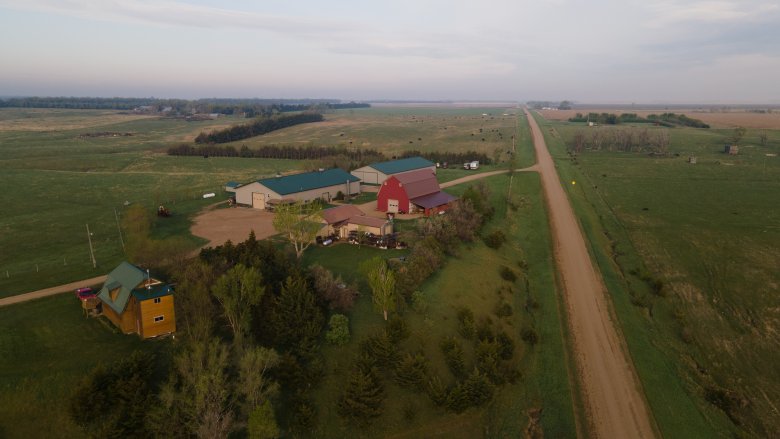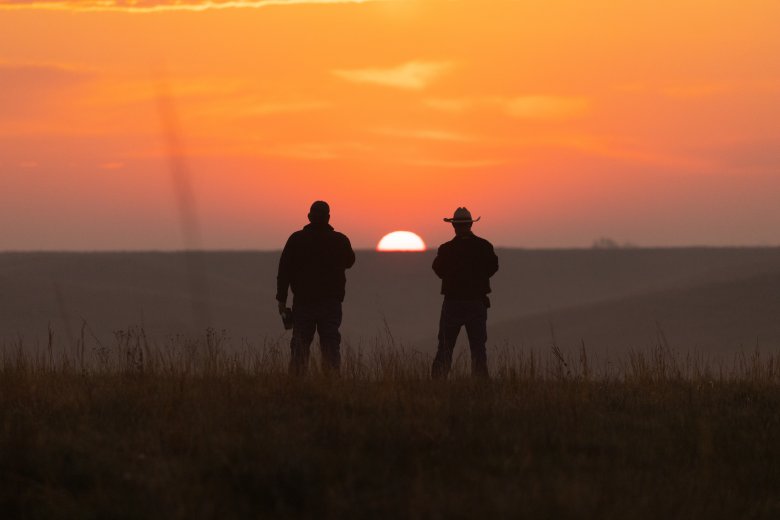Content ID
Conserving a resilient rangeland

The Hansen Ranch, which has been around since 1964, has a stagecoach trail that runs along the bluffs of the James River near Letcher, South Dakota.
“My mother, who runs the cattle on this place, grew up-river from here,” Doug Hansen explains.
- READ MORE: The lantern man
“She's been along the banks of the James River her entire life,” he says, sitting near one of his restored wagons, a campfire glowing nearby in the early morning light. “And we’ve been running cows on this place ever since.”

In addition, Hansen has been in the wagon restoration business since 1978. He and his wife Holly restore old wagons and build stagecoaches and all types of historic horse-drawn vehicles that traveled across that same prairie.
As that business matured, Hansen became more and more involved in the management of the grasslands on their growing venture.
“These are all native prairies along the Bluffs of the James River, and restoration is in my blood,” he says.
Just as he conserves and restores horse-drawn vehicles, he’s doing the same to restore and conserve the native prairie. His father was a conservationist who planted many trees on the land and was always conscientious about taking care of the ranch.
Hansen’s mother Dvonne, her wide-brimmed white cowboy hat perched expertly atop her short, gray hair, adds, “I’ve never been a farmer at heart. We grew up on a ranch near the river and had cattle and horses. We used to raise some corn, but we’ve planted all that land to grass. If I want corn, I can buy it at the elevator.”

“My mother has that same passion, and I guess that’s been passed onto me,” Hansen says. “Holly and I both enjoy the beauty and wildness of the land. And it’s very gratifying to restore the land to its native state. As we gain more native grasses and forbs, we see production go up. It’s a win-win!”
While walking his prairie pastures, Hansen talks about how taking cattle off the land will create a monoculture of Kentucky bluegrass and brome grass.
Work with the Natural Resources Conservation Service
Heidi Rients, an NRCS Resource Unit Conservationist, has watched the diversity change and grow on the Hansens’ ranch over time.
“We know there were some flat areas that were probably farmed back in the 30s, and they are likely more invaded with brome and Kentucky bluegrass,” Rients explains. “It will be harder to change those species, but to see the Thin Uplands and other areas that haven't been farmed have a chance to show themselves is extremely impressive. Doug is doing this through the proper rests, the change in time of use each year, and the right number of cows.”

Ryan Alley, an NRCS District Conservationist from their Mitchell Field Office adds, “Heidi Rients and Rod Voss of the NRCS have really been doing a lot relative to the grazing side with Doug. Now, he's starting to get interested in prescribed burning to deal with his infestation of Cedar trees and he’s trying to set back the cool season invaders like smooth brome, Kentucky, bluegrass, all of that. He’s really big into the resilience of his range lands.”
Doug attributes water as one of the components that’s allowed the ranch to succeed.
- READ MORE: Rotational grazing revival
When he bought a unit of land to the south of the ranch, he had already connected with the NRCS about assistance with water. Together, they installed about two miles of pipeline for about seven water sites.

“Water is your biggest priority. If you've got water, you can move cattle anywhere,” Hansen says. “That's number one. Number two is to put in some permanent high tensile fencing. And then from there it's just changing your management styles to fit your resource concerns.”
Rients says an extremely important practice is to get out on site and observe the land. It will help make decisions in the future.
“One thing I've noticed about Doug is he pays very close attention to what the site looks like before he puts the cows out, while they're out there, and again when they're done.”
Doug looks out over his herd of cattle, leans on a fence post, and looks to the future.
“My kids now are having babies and I'm surrounded with grandchildren,” he says. “I see it as a huge asset to have them involved in the ranching operation. And when I take my grandchildren out across the prairie, picking wildflowers or looking at various forbs and grasses, or even riding the horses through the pasture and moving cattle, they gain a lot of knowledge, a lot of life experiences from doing that. I think that's very important.”
Tip of the Day
When you mow in a remote area




